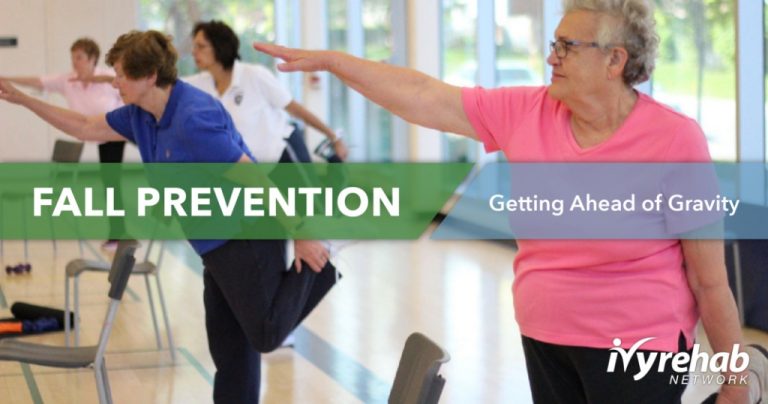
Fall Prevention- Getting Ahead of Gravity
Every year falls kill approximately 30,000 Americans. Many more are injured and permanently debilitated by a fall. As a physical therapist, my advice is that we should all maintain or improve the physical attributes that prevent a fall. Fall prevention training has been proven to reduce your chances of having a fall event. Here is a list of lifesaving exercise activities you can use to reduce your risk of a fall:
Train in a Standing Position
If your goal is to move better and remain free of injury then, 90% of your exercise activity should be performed in a standing position. Developing better kinesthetic awareness, strength, and coordination in a standing posture is the crucial component of training that prevents a fall.
Practice Moving in all Directions
Fall prevention training involves improving multi-directional movement skills. Most falls happen from an unexpected disruption of your equilibrium. You may get pushed to one side, twisted off-center or a foot slides out from under the body. Most gym activities are predominantly sagittal plane – forward and backward. We all need to be able to move well in all directions.
Practice Moving Faster for Fall Prevention
Fall reaction training should focus on exercise activities that make you quicker. Research on falls has shown that a gait pattern (how you walk) that starts to slow down is the best predictor for a future fall. Agility ladder footwork, medicine ball throws, and hurdle drills are examples of faster-paced training activities. Yoga, pilates, recumbent bicycle riding, and muscle isolation exercises will not make you better at moving faster, but they do help keep you flexible.
Stand on One Leg
A simple and proven fall prevention activity is a single leg stance balance training. Single leg balance is a skill that tends to deteriorate with age, injury and a sedentary lifestyle. Try these simple exercises:
- Stand on one leg for twenty seconds
- Stand on one leg and turn your head side to side
- Stand on one leg and then close your eyes
Practice Getting Up and Down off the Floor
One of the best anti-fall training activities is the consistent practice of getting up and down off the floor. Moving gracefully from standing to the floor and back up again is a life skill that keeps you independent and safe. Many people are very impaired in this basic task of mobility. They may crawl to a piece of furniture for an assist and transition from the floor in an unsteady and unsafe manner.
Perform Single-Leg Strength Training
We are monopods. We absorb and then create force one leg at a time. During activities of daily living, one leg is loaded more than the other. It only makes sense that we train our legs the same way we use them. Work with a trainer and learn how to perform step-ups, single-leg squats, rear foot elevated split squats or single-leg deadlifts.
Become a Better Shock Absorber
Fall events often occur because of an impact. The force of the impact causes our body to give in to gravity and down we go. Just like any other physical attribute, impact resilience can be trained. Mat work, medicine ball throws, and rope drills are some of the activities that can be used to improve impact resilience.
Practice a Little Every Day
Integrate anti-fall training into your lifestyle. Stand on one leg while you brush your teeth. Stand on your right leg for thirty seconds then your left leg thirty seconds. Perform the multi-directional exercise as movement preparation before a bike ride or run. Get some instruction on a program of exercise that improves agility, single-leg strength, and power production.
Someday, somehow and when you least expect it you are going to have an unplanned interaction with gravity! Your fitness program should make you more responsive to a fall event and less likely to be injured.
By: Susan Fisher, MPT
Susan Fisher is a physical therapist with Ivy Rehab Physical Therapy in Milford, Michigan.
The medical information contained herein is provided as an information resource only, and does not substitute professional medical advice or consultation with healthcare professionals. This information is not intended to be patient education, does not create any patient-provider relationship, and should not be used as a substitute for professional diagnosis, treatment or medical advice. Please consult with your healthcare provider before making any healthcare decisions or for guidance about a specific medical condition. If you think you have a medical emergency, call your doctor or 911 immediately. IvyRehab Network, Inc. disclaims any and all responsibility, and shall have no liability, for any damages, loss, injury or liability whatsoever suffered as a result of your reliance on the information contained herein.